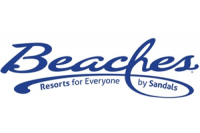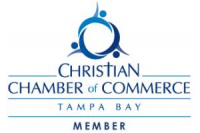Leave the Ordinary Behind
Whether you’re planning an important multi-generational vacation, group vacation, annual meeting, a milestone celebration or a rewarding incentive program, Norwegian ships are the ideal venue. With a combined fleet of 26 ships that cruise to over 450 destinations worldwide, they have options for every style and budget. Their Charter, Meeting & Incentive Team is here to help us create your most effective and memorable program ever. TravelKatz does the hard work so you and your event can be the shining stars.
Leave the Ordinary Behind
Whether you’re planning an important multi-generational vacation, annual meeting, a milestone corporate celebration or a rewarding incentive program, Norwegian ships are the ideal venue. With a combined fleet of 26 ships that cruise to over 450 destinations worldwide, they have options for every style and budget. Their Charter, Meeting & Incentive Team is here to help us create your most effective and memorable program ever. TravelKatz does the hard work so you and your event can be the shining stars. Welcome Aboard!
The Case for Cruise Events – The demand for cruising has increased by 20.5 percent over the past several years and 68 percent in the past 10 according to a study conducted by the Cruise Line Industry Assoc. In fact, 27.2 million passengers are expected to cruise this year alone. So the interest in cruise groups, corporate cruise meetings, and incentives is on an upswing. Remember – only 24 percent of US adults have taken a cruise.
While some families and companies may have never even considered a ship as a possible venue to host important events, we are seeing more and more activity on the group side as savvy planners are beginning to recognize the benefits of cruising both for their families, participants and for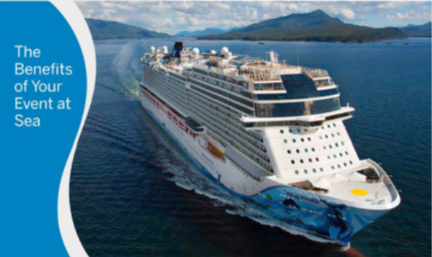 delivering the company’s desired business objectives.
delivering the company’s desired business objectives.
No matter the type of group, program, or agenda; the benefits of choosing a cruise over a traditional resort for a meeting or other program include:
- UNIQUE EXPERIENCES FOR ATTENDEES – There are experiences groups can have on a cruise that often can’t be duplicated at a resort. One of the biggest advantages of cruise meetings and recognition programs is the appeal of a unique. sea-going venue.
- HIGHER EXPERIENTIAL QUOTIENT – Cruises are becoming ever more experiential in nature, offering a wider range of onboard activities from ziplining, and climbing walls in the middle of the ocean to gourmet cooking classes with renowned chefs as well as more extensive menus of shore excursions that appeal to clientele with diverse interests. The experiential element and uniqueness of cruising create a higher level of camaraderie among family members and colleagues, as well as build company and brand loyalty. For companies, this return on event experience is priceless.
- INCREASED ATTENDEE PARTICIPATION – For companies, at traditional venues such as resorts. attendees may venture off-premises to explore the area, possibly causing them to miss programs or events and decreasing their chance to connect with other participants. By contrast, a cruise is self-contained and provides attendees with many built-in opportunities for networking while maximizing meeting attendance and participation. Participants get more out of the program as a whole, again yielding companies and organizations a greater return on their investment.
- ENHANCED BUDGET CONTROL AND BIGGER BANG FOR THE BUCK – On a cruise, the cost of meals. meeting space. audiovisual equipment usage, recreational activities and entertainment is included in the price paid per passenger. Additionally, many amenities that cost extra at traditional resorts are complimentary on a cruise. This makes cruise events less expensive per guest than their land-based counterparts. While inclusions do vary from cruise line to cruise line – even on board the NCL ships, Regent Seven Seas Cruises, and Oceania Cruise Line, they can save groups on average 25-30% percent over a comparable land-based venue. Onboard theaters, lounges and other areas used for group functions feature state-of-the-art sound, light and projection systems as well as built-in decor, yielding additional savings.
RIDING THE CRUISE TREND WAVE – “It’s not your grandfather’s cruise-or even your father’s cruise.” If there’s one statement to be made about cruises – this is it! Several significant cruise trends are emerging, and some involve changes with strong potential to alter planners’ and decision-makers’ perception of cruise meetings and incentives. Consider them when contemplating and putting together your next significant event.
- “BUILT FOR BUSINESS” BOOM – For companies, cruise vessels now feature purpose-built meeting facilities and a comprehensive offering of technology; most provide onboard technical assistance. Featured are theaters that can seat 600 to 1,000 attendees, along with other public spaces perfect for award ceremonies, presentations, social gatherings, entertainment and more. State-of-the-art facilities have the latest AV equipment and Wi-Fi.
- DINING REVOLUTION – Cruise lines are serving fare whose caliber rivals that found in fine restaurants. They also accommodate a wide variety of dietary needs. There is an important role of food being at the center of great conversation and memories as family and friends gather around the table. Additionally, cruise dining is becoming more flexible and convenient. On Norwegian Cruise Line’s ships, there are complimentary and specialty dining options, no fixed dining times, or pre-assigned seating. On Oceania Cruises, known for the finest cuisine at sea with menus inspired by Master Chef Jacques Pepin, and on Regent Seven Seas Cruises, offering the most inclusive luxury experience, gourmet dining is included.
- HEALTHY DOSES – Cruise lines are incorporating various programming to satisfy the needs of passengers. This includes wellness seminars, fitness classes, more diverse onboard exercise facilities and the like. Cruise lines are getting very creative when it comes to supporting wellness-for example: designing team building around fitness, organizing ‘fun walks’ around the ship, and bringing in programming that focuses on topics like sleep, rest, mindfulness, and meditation. Have you considered a wellness cruise for your gym membership?
- SHIPS-WITHIN-SHIPS – Some groups with a desire for exclusivity and privacy stayed away from cruises if chartering wasn’t a practical option for them. However, an alternative is gaining ground: Private sections on larger ships, with their own luxury-level accommodation, and amenities. For instance, The Haven by Norwegian, an exclusive enclave with its most luxurious, well-appointed, and spacious accommodations. Not only do guests have access to all the ship has to offer, but they can also enjoy the personal service of a concierge and 24-hour butler throughout the entire stay. Haven guests also have private keycard access to exclusive spaces.
- COLD AND HOT – Demand for cruises to cold-weather destinations is heating up. Some of the most requested destinations right now include the Alaska adventure, and the beauty of the Baltics. Cruising is the best way for groups to experience The Mediterranean, Hawaii and the Caribbean as perennial favorites for corporate meetings and incentive groups. See these ideas later in the document.
GETTING EXCURSIONS RIGHT – Excursions are as important a component of the cruise experience as onboard activities, so they must be carefully chosen and scheduled. For best results:
CONSIDER PARTICIPANT DEMOGRAPHICS – Age, interests, and activity level.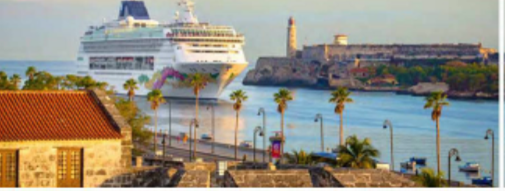
INSIST ON VARIETY – Select excursions that involve physical activity and some which are more sedentary
BE FLEXIBLE – Some passengers may want to go on shore excursions, some may not.
PRACTICE PROPER SCHEDULING – Is there sufficient time for at sea meetings and excursions on the same day?
TIMING IT RIGHT – For Companies this definitely applies to planning cruise meetings and incentives. Whether putting together an event for a group or a planning a full ship charter, the earlier the planning can begin, the easier the execution. You can follow this timetable as a guide.
18 TO 24 MONTHS OUT (CHARTERS) – Generate Request for Proposal (RFP).
15 TO 18 MONTHS OUT (CHARTERS) – Finalize the contract to ensure that dates are locked in.
15 MONTHS OUT (GROUPS) – Start researching programs, cruise products and destinations.
12 MONTHS OUT (GROUPS) – Finalize the contract to ensure that dates are locked in.
6 MONTHS OUT – Create and submit an outline of day-to-day programming, group functions, meetings, and dining opportunities so that all appropriate spaces on the vessel can be reserved and blocked.
3 MONTHS OUT – Begin gathering participant information. Submit it to the cruise line for the manifest.
60 DAYS OUT – Finalize and have in hand all individual documentation and reservations. Ensure that all shore excursions have been arranged and booked by this point-no exceptions.
30 DAYS OUT – Tie up any loose ends and final details. Hold a conference call with ship staff to walk through programming.
TO CHARTER … OR NOT TO CHARTER – Chartering an entire ship for a Multi-generational family gathering, company meeting or incentive event-e.g., completely buying out all of its accommodations, offers a wealth of advantages to planners and groups alike. Chartering allows you to tailor almost every aspect of the cruise including the itinerary-plus it offers total exclusivity, flexibility, and security. However, opting to charter the entire vessel may not make sense for every client. Carefully weighing the benefits against potential drawbacks will allow you to make an informed decision. Chartering is a “must” for groups that want what they want in terms of a specific itinerary that isn’t available in a regular rotation. As an example perhaps a client is seeking a five-night cruise from Rome to Barcelona. Such a short European itinerary is most likely unavailable, so the client could decide on a full-ship charter.
On the positive side, going the charter route gives planners the freedom to customize the onboard experience as much as they would like. There are very few things more impressive than chartering your own ship. The sheer impact is immeasurable. Since with a charter you virtually own the whole ship for your voyage, you have the ability to use all the restaurants and public spaces at your leisure, and your corporate or event branding can be integrated throughout the entire vessel. Full-ship charters are also excellent for sharing confidential information or product launches as only your employees or attendees are on the ship.
With nobody else onboard. mealtimes, daily activities. enrichment programs, entertainment, ports of call and shore excursions can all be tailored to best suit individual groups’ needs and program objectives. Chartering also opens doors for seemingly endless branding possibilities. Companies can freely display their logo on materials and digital signage throughout the ship. Clients have the flexibility to tailor gangway carpets, printed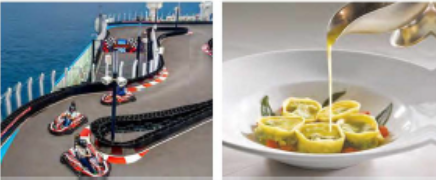 itineraries, key cards, menus, napkins, casino chips and more, as well as to display their own flag.
itineraries, key cards, menus, napkins, casino chips and more, as well as to display their own flag.
Yet another advantage of chartering is a positive impact on family members and participants. While the participant camaraderie sparked by any cruise event will be very significant, the natural affinity of group members aboard a chartered vessel is even greater. Because a chartered cruise ship is a self-contained environment without any distractions (including those caused by other passengers and their onboard activities), attendance at and participation in meetings and group events is almost guaranteed. Attendees feel “honored and excited” when they board a privately chartered vessel, particularly when every aspect of the program has been customized for their group alone. They cannot enjoy such a unique experience on their own, and, consequently, will return from their cruise event with a renewed sense of pride in and loyalty.
There is undivided attention from the ship’s entire staff and crew. With no other passengers to assist, key personnel will give all attendees the VIP treatment and have the freedom to go the extra mile to support the groups’ agenda.
Keep in mind, however, that these advantages come at a price. Notably, full-ship charter agreements are unlike group cruise contracts in that payment must be guaranteed in full and in advance. In most cases, this means providing an irrevocable letter of credit. Contracts do not include an attrition clause, so if a large number of individuals who commit to a meeting on a chartered ship do not attend, or if fewer incentive program participants than expected actually earn a trip on a full-ship charter, the financial repercussions can be significant.
The benefits of a charter almost always far outweigh the risks, but it may be better to try a group cruise first to get an idea of what attrition may be and make a more informed decision. Choosing the right size ship is critical for maximum cost-effectiveness. Tempting as all the space may be, you don’t want a ship that accommodates several thousand passengers, when your group has, say, 400 or 500 people. For more advice on the “charter-versus-group cruise” dilemma and how to select the right ship to charter, consult the experts at TravelKatz. Kathryn and Sandra are ready to help you look through all the advantages of a full ship charter or a group cruise. This is where their expertise lies.
CRUISE MEETING / PLANNING ROADMAP – Putting together a cruise meeting, multi-generational family cruise, or other event can be a hassle- free process for planners. All it takes is following a simple series of steps:
- ADDRESS KEY QUESTIONS – For starters, what is the purpose of the event? Is it a corporate meeting involving employees at all levels or a meeting with a more limited range of participants (for example, upper management)? Or is it an incentive? To what other destinations has the group traveled, and which hotels and resorts were used? How did these events turn out? Is the program flexible? Is it complex? Explore attendee demographics, such as age and activity level, along with whether any participants have physical limitations and whether guests will be permitted. Review the program budget, including whether it’s flexible and to what degree. Don’t forget to include suggestions for as much of the family that is possible when discussing a multi-generational cruise.
- SET EXPECTATIONS – Lay out details, including accommodations (single vs. double occupancy), type (balcony, suites, etc.) and costs and/or policies pertaining to group dining, drink packages, internet packages, excursions, and onboard credits. Create a rough onboard program agenda, including free time. This will make it easier for TravelKatz and the cruise line to develop the right proposal the first time around.
- DISCUSS GROUP CRUISE VS. CHARTER OPTIONS – Chartering a ship for a group’s exclusive use yields the highest degree of flexibility to customize every aspect of the cruise experience. It also offers more privacy and security. However, risks and other considerations may come into play. Perhaps start with a group cruise option; then look at how those plans came about. Next time might be the opportunity to introduce a charter experience.
- REVIEW THE ITINERARY – Regarding the details of embarkation and debarkation ports. In addition to attendee demographics, look at where attendees will be coming from and how they will reach the port city (by plane or car), whether air lift and proximity to the port city’s airport matter and how participants who fly to the port city will be transported from the airport to the port. The availability of pre- and post-cruise hotels. ship sailing time and early departure times merit a close look. (Note that early departure rules vary by cruise line and country of embarkation and debarkation). Explore details regarding ports of call. Determine whether visas are required for attendees of all or some nationalities, which shore excursions might appeal to the group, and whether private group excursions should be incorporated into the itinerary.
- LOOK INTO NECESSARY TRAVEL DOCUMENTS – It is strongly recommended that everyone boarding a ship have a passport to facilitate the immigration and customs processes and avoid unnecessary delays.
- CREATE THE REQUEST FOR PROPOSAL (RFP) – Include the answers to the questions in Steps 1 and 2. Planners who intend to use the same RFP they have utilized for land-based meetings and incentives should add to the document their preferred destination (Bahamas, Caribbean, Mediterranean, Baltics, etc.), number of days available for sailing, range of dates available for sailing, number and type of cabins needed, number of people per cabin and an indication of whether any cabins will have only one occupant. Expectations regarding necessary meeting space, dining, and group functions belong in the RFP as well.
- REVIEW THE RFP – The RFP should include options on ships, cabin categories, and pricing. Note – a proposal does not guarantee space. Typically, quoted space will be reserved and staterooms assigned once the cruise line has received a signed contract and deposit. Cruise lines have Charter, Meeting & Incentive teams whose members can facilitate the planning process along with TravelKatz initial planning documents. Planners signing a cruise contract can expect to work alongside TravelKatz and a dedicated cruise line operations team member to facilitate all program planning needs.
DECIPHERING DESTINATIONS – In evaluating destination options, consider not only the obvious, such as budget and participant demographics, but also factors like the duration of the meeting or incentive event and the time of the year it will be held. Here are a few tried-and-true perennial favorites to consider, along with some up-and-coming destination options.
PERENNIAL FAVORITES
 THE CARIBBEAN
THE CARIBBEAN
SEASON: Year round
NIGHTS: 5 to 7
Fabulous scenery, gentle trade winds and a year-round warm climate have long kept the Caribbean on the list of the most popular cruise destinations. The Eastern Caribbean stretches in a southward’s direction from Puerto Rico to Grenada and includes Antigua, Barbados, and St. Lucia. Further south closest to the South American coast just a few miles from Venezuela are sister islands Trinidad and Tobago, as well as the Dutch islands of Aruba. Bonaire and Curacao which lie to the West. Groups looking for a taste of adventure will enjoy the islands of the western Caribbean, home to Belize, Honduras, the Cayman Islands and Jamaica.
THE MEDITERRANEAN
 SEASON: Year round
SEASON: Year round
NIGHTS: 5+
The eastern Mediterranean region is known for its beauty and history. Cruises to this region typically cover Greece (including the Greek islands); Croatia (Dubrovnik and/or Split); Turkey (Istanbul, and lsmir); Cypress. Malta, and Bulgaria. Western Mediterranean cruise itineraries may encompass Corsica; Italy and its ports, France’s coastline; Monaco, and Spain. Some western cruises also visit the Canary Islands, Portugal, Gibraltar, and Sicily.
HAWAII
 SEASON: Year round
SEASON: Year round
NIGHTS: 7
Cruises of the Hawaiian Islands allow visitors to sample the natural beauty and culture of Oahu, Kauai, Maui. and the Big Island. Norwegian Cruise Line is the only cruise line that offers year-round, round-trip sailings from Honolulu.
UP-AND-COMING
ALASKA
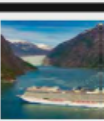 SEASON: April to September
SEASON: April to September
NIGHTS:7+
Icy fjords that tower over the Pacific Ocean, snowy peaks, coastal forests, sunsets at midnight, abundant wildlife-these attributes, and more, put Alaska at the top of the “trending” destinations list. All Norwegian Cruise Line Holdings brands already cruise Alaska, giving every budget and event an option to consider. Don’t miss Danali!
NORTHERN EUROPE
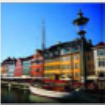 SEASON: Year round
SEASON: Year round
NIGHTS:7+
A variety of destination options are making cruises of Northern Europe an increasingly popular option for groups of all types. Itineraries range from Scandinavia, The Netherlands, Poland, all the way to the United Kingdom, and Iceland.
Give TravelKatz, Kathryn or Sandra, a call at 352-277-7300 to discuss the possibilities of this fascinating style of vacation. A group cruise, whether it be for your company or your family, can be accomplished with us. This is our Forte, and we would love nothing more than to help your cruise come to fruition. We hope this cruise post is helpful.

